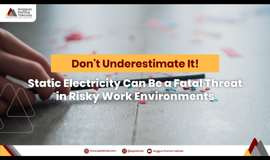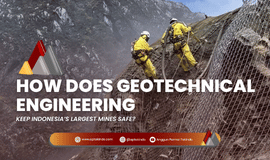When we see elevated toll roads slicing through cities, massive bridges spanning straits, or airport runways supporting aircraft weighing hundreds of tons, we rarely realise that all of these structures stand on ground that is constantly moving and changing over time.
Behind the strength and stability of these infrastructures lies the invisible role of geotechnical engineering.
Geotechnics is a branch of civil engineering that studies how soil and rock behave when supporting structural loads. In a country like Indonesia, with highly diverse ground conditions ranging from soft clays to loose sands, geotechnical engineering is the key to the success of any construction project.
Here are some examples of its application in Indonesia’s major infrastructures:
1. Bali Mandara Toll Road
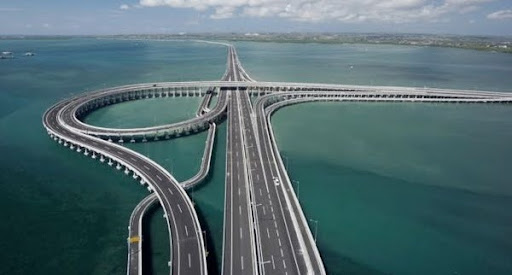
A 12.7 km toll road built over the sea, connecting Nusa Dua, Ngurah Rai, and Benoa. The geotechnical challenges faced in this project included soft and deep marine soils, high tidal variations, and structural corrosion risks.
Geotechnical solutions implemented:
- Detailed marine soil investigations (boreholes, CPTs, sampling)
- Preloading and geotextile installation for the approach embankments
- Long piles (spun piles and bored piles) penetrating deep into hard soil layers.
2. Suramadu Bridge
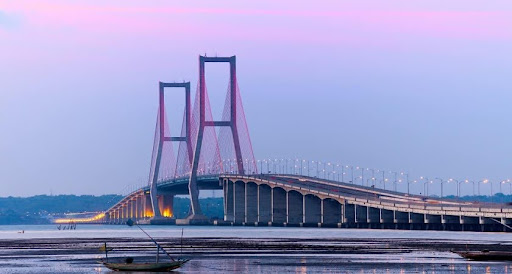
Indonesia’s longest bridge (5,438 m) connecting Surabaya and Madura faced geotechnical challenges in the form of pylon foundations located in the middle of the sea with strong currents and thick layers of soft clay.
Geotechnical solutions implemented:
- Large diameter bored pile foundations reaching depths of 50-60 m
- Analysis of vertical and lateral bearing capacity to withstand structural loads and sea currents.
3. Jakarta-Cikampek II Elevated Toll Road
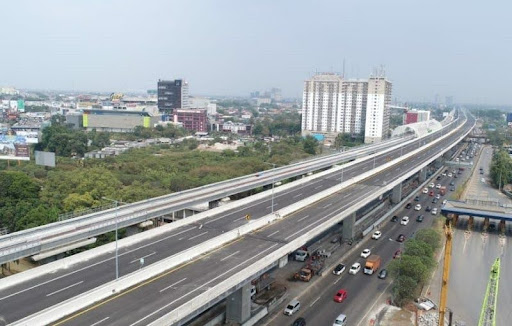
This 36.4 km elevated toll road built above the existing Jakarta-Cikampek toll road also faced geotechnical challenges due to its soft clay subgrade with high settlement potential.
Geotechnical solutions implemented:
- Bored pile foundations with diameters of 1-1.5 m extending to hard soil layers
- Detailed settlement analysis to avoid differential settlement.
4. Kertajati International Airport
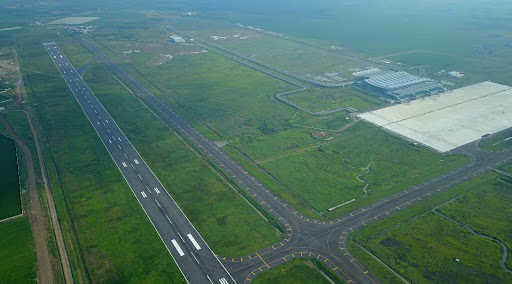
The second largest airport in Indonesia with a 3,000 m runway in Majalengka, West Java, faced geotechnical challenges due to thick layers of soft alluvial soils with long consolidation periods.
Geotechnical solutions implemented:
- Preloading combined with vertical drains and vacuum consolidation
- Stone columns to improve bearing capacity and accelerate consolidation.
5. Paiton Steam Power Plant, East Java
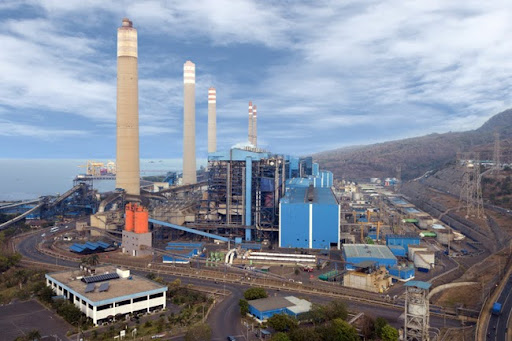
This coal-fired power plant located on the coastal area of Probolinggo also faced geotechnical challenges due to soft soils with low density and high settlement risks.
Geotechnical solutions implemented:
- Ground improvement using stone columns and dynamic compaction
- Liquefaction analysis for earthquake risk mitigation.
So, Why Is Geotechnics So Important?
Without accurate geotechnical calculations, any structure will face risks of settlement, cracking, or even total failure. This discipline ensures that the infrastructures we build are safe, efficient, and long-lasting, supporting economic activities and the lives of millions around them.
Sources:
- Journal of Infrastructure Development Vol.4 No.1 (2012); Wika Gedung (2022).
- Indonesian Geotechnical Journal Vol.8 No.1 (2013); Hutama Karya (2019).
- Ministry of Public Works and Housing (2019); Waskita Karya Annual Report (2020).
- PT Wijaya Karya Infrastructure Report (2018); West Java Highways Department (2017).
- Paiton Energy Engineering Report (2015); Indonesian Geotechnical Society Paper (2016).









